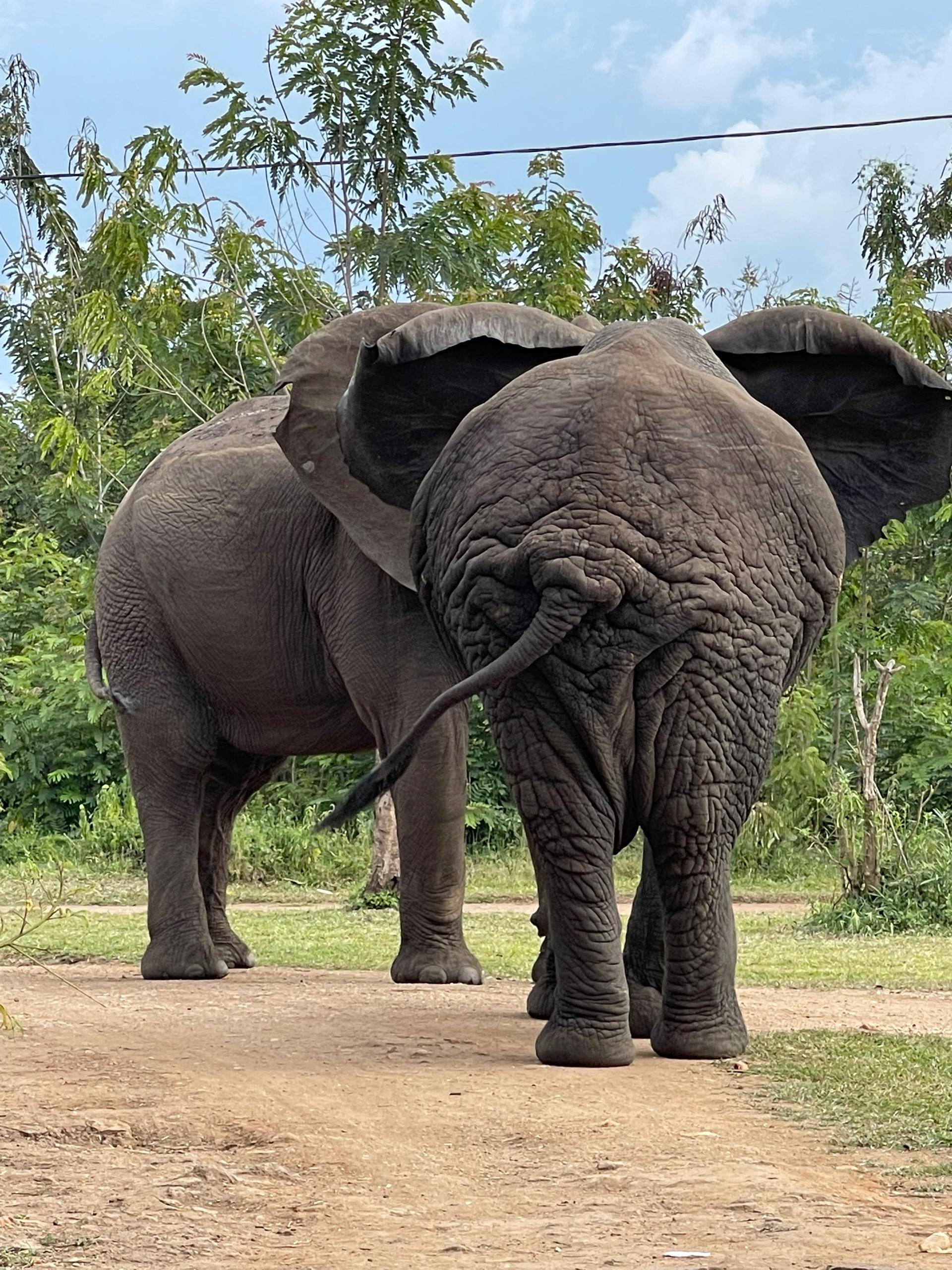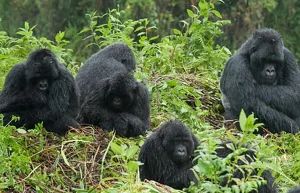Elephants remain one of the most iconic animals to see on safari, and East Africa is one of the best regions in the world to witness these majestic creatures. From the savanna giants of Kenya and Tanzania to the elusive forest elephants in Uganda, the region offers unforgettable encounters. This guide answers the most frequently asked questions about where to see elephants in East Africa and provides everything travelers need to know when planning a safari in 2026 and beyond.
Where can you see elephants in East Africa?
Travelers can see elephants across multiple countries in East Africa, including Kenya, Tanzania, Uganda, and Rwanda. National parks and reserves such as Amboseli National Park in Kenya, Tarangire National Park in Tanzania, and Queen Elizabeth National Park in Uganda are famous for their thriving elephant populations. Rwanda’s Akagera National Park has also seen a strong recovery in elephant numbers due to conservation efforts. Each destination offers unique landscapes and experiences, from vast grasslands to river valleys and dense forests.
What are the best national parks in Kenya to see elephants?
Kenya is one of the leading safari destinations in Africa, with some of the best places to see elephants. Amboseli National Park is world-renowned for its large herds and spectacular views of Mount Kilimanjaro as a backdrop. Tsavo National Park, which is divided into Tsavo East and Tsavo West, hosts the country’s largest elephant population and is known for its famous red-dusted elephants that roll in the park’s rich soils. Samburu National Reserve is another excellent location, home to elephants and the unique wildlife of northern Kenya.
Where are the best places in Tanzania to watch elephants?
Tanzania offers some of the best elephant viewing opportunities in East Africa. Tarangire National Park is especially famous for its massive elephant herds, particularly during the dry season when they gather near the Tarangire River. Serengeti National Park also provides excellent chances to see elephants alongside the Great Migration. In addition, Ruaha National Park, one of Tanzania’s largest and wildest reserves, is home to a significant elephant population and offers a less crowded safari experience.
Can you see elephants in Uganda?
Yes, Uganda is home to both savanna and forest elephants. Queen Elizabeth National Park hosts large elephant herds, often seen grazing in open savanna or moving through the Ishasha sector, where tree-climbing lions also live. Murchison Falls National Park is another stronghold, with elephants frequently spotted along the Nile River. Uganda also shelters the rare African forest elephant, which can be found in dense forests like Kibale National Park and Bwindi Impenetrable National Park, though they are more elusive and harder to see.
Are elephants found in Rwanda’s national parks?
Rwanda’s Akagera National Park is the best place to see elephants. The park has successfully restored its elephant population through conservation programs and today supports a thriving community of these magnificent animals. Elephants in Akagera are often seen near lakes, open plains, and woodland areas. While Rwanda is most famous for mountain gorillas in Volcanoes National Park, Akagera offers a classic savanna safari experience with elephants, lions, giraffes, and rhinos.
What is the largest elephant population in East Africa?
The largest elephant populations in East Africa are found in Tanzania, particularly in Selous Game Reserve (now part of Nyerere National Park) and Ruaha National Park. Combined, these areas host tens of thousands of elephants, making Tanzania a leading stronghold for the species. Kenya’s Tsavo ecosystem also has one of the largest populations, while Uganda and Rwanda maintain smaller but growing numbers due to active conservation.
When is the best time to see elephants in East Africa?
The best time to see elephants in East Africa is during the dry season, which runs from June to October and from December to February. During this time, water sources become scarce, and elephants gather around rivers, lakes, and waterholes, making them easier to spot. In Kenya and Tanzania, dry season safaris provide clear sightings as vegetation is less dense. Uganda and Rwanda also offer excellent elephant viewing in the dry season, though forest elephants may remain more elusive.
Which East African country is best for elephant safaris?
Kenya and Tanzania are often considered the best countries for elephant safaris due to their large populations and famous national parks. Amboseli in Kenya and Tarangire in Tanzania are particularly renowned for elephant viewing. However, Uganda and Rwanda provide unique opportunities to combine elephant safaris with other experiences such as gorilla trekking, chimpanzee tracking, and bird watching. The best choice depends on whether travelers want a classic savanna safari or a more diverse adventure combining multiple wildlife encounters.
Can you see both savanna and forest elephants in East Africa?
Yes, East Africa is one of the few regions where travelers can encounter both savanna elephants and forest elephants. Savanna elephants, the larger and more common species, dominate the open grasslands of Kenya and Tanzania. Forest elephants, smaller and more elusive, inhabit Uganda’s dense forests. While sightings of forest elephants are rarer, travelers may spot them in Kibale or Bwindi during treks. This diversity makes East Africa particularly special for elephant enthusiasts.
How do elephant conservation efforts in East Africa protect the species?
Conservation efforts in East Africa play a critical role in protecting elephants from threats such as poaching and habitat loss. Governments, NGOs, and local communities collaborate to strengthen anti-poaching patrols, create wildlife corridors, and promote eco-tourism. Kenya has established protected areas and implemented strict laws against ivory trade. Tanzania has increased surveillance in elephant strongholds like Selous and Ruaha. In Uganda and Rwanda, conservation programs focus on balancing tourism, community benefits, and wildlife protection. These efforts have helped stabilize and even grow elephant populations in recent years.
What unique elephant behaviors can travelers witness in East Africa?
Travelers in East Africa can witness fascinating elephant behaviors, including social bonding, mud bathing, and playful interactions among calves. In Amboseli, elephants are often seen walking in single-file herds with Kilimanjaro as a dramatic backdrop. In Tarangire, visitors can watch elephants digging into dry riverbeds to find underground water. Forest elephants in Uganda display unique adaptations for moving through dense vegetation. Observing these behaviors provides insight into the intelligence and complex social lives of elephants.
Can you combine elephant viewing with the Great Migration or gorilla trekking?
Yes, East Africa offers excellent opportunities to combine elephant safaris with other iconic experiences. In Tanzania’s Serengeti, elephants can be seen alongside the Great Migration of wildebeest and zebras. In Kenya, elephants are often spotted in Amboseli or Tsavo, which can be combined with visits to the Masai Mara. Uganda and Rwanda allow travelers to combine elephant viewing with gorilla trekking, creating a diverse safari itinerary that blends savanna and forest experiences.
Are elephants easy to spot on guided safaris in East Africa?
Yes, elephants are generally easy to spot on guided safaris, especially in savanna parks. Their large size, social behavior, and tendency to stay near water sources make them highly visible. Guided safaris increase the chances of sightings, as expert rangers know the areas where elephants frequent. In forested areas, elephants can be harder to find, but skilled trackers improve the likelihood of encounters. Safari vehicles also allow visitors to approach elephants at safe distances without disturbing their behavior.
What is the difference between African forest elephants and savanna elephants?
The African savanna elephant (Loxodonta africana) is the larger species, with males reaching up to 4 meters in height and weighing as much as 6,000 kilograms. They are commonly found in Kenya and Tanzania’s open grasslands. The African forest elephant (Loxodonta cyclotis) is smaller, with straighter tusks and rounder ears, adapted to life in dense forests. Uganda is one of the few places in East Africa where travelers can encounter this rarer species.
Which East African parks are UNESCO World Heritage Sites for elephant populations?
Several East African parks with significant elephant populations are designated UNESCO World Heritage Sites. Tanzania’s Serengeti National Park and Selous Game Reserve (Nyerere National Park) are recognized for their ecological importance. Kenya’s Mount Kenya National Park and surrounding ecosystems also contribute to elephant conservation. Uganda’s Bwindi Impenetrable National Park, while famous for gorillas, plays a role in protecting forest elephants as well. These sites highlight the global importance of East Africa’s elephant habitats.
How many elephants remain in East Africa today?
Estimates suggest that East Africa is home to over 200,000 elephants, though numbers vary by country and park. Tanzania has the largest population, followed by Kenya, with Uganda and Rwanda maintaining smaller but significant numbers. Conservation efforts have helped stabilize populations after decades of decline due to poaching. Ongoing monitoring ensures accurate data and supports targeted protection measures.
What threats do elephants in East Africa face?
Elephants in East Africa face threats such as poaching for ivory, human-wildlife conflict, and habitat loss due to agricultural expansion. Climate change also affects their habitats, especially in dry regions where water and food become scarce. Conservation organizations work with communities to mitigate conflicts, such as building elephant-proof fences and creating alternative livelihoods. Travelers contribute to conservation by choosing responsible tour operators and supporting eco-friendly lodges.
How do East African communities coexist with elephants?
Many East African communities live alongside elephants and have developed strategies for coexistence. Community-based conservation projects provide income through eco-tourism, encouraging locals to protect elephants rather than hunt them. Education programs raise awareness about the ecological importance of elephants. Some communities use traditional methods, such as beehive fences, to deter elephants from raiding crops. These initiatives strengthen harmony between people and wildlife.
Are elephant safaris safe for tourists in East Africa?
Elephant safaris are safe when conducted with professional guides and within regulated national parks. Tourists must follow safety guidelines, including staying inside vehicles during game drives and maintaining a respectful distance from elephants. Guides are trained to handle encounters and ensure visitor safety. Walking safaris in some parks are also safe when led by armed rangers. Elephants are generally calm but can become aggressive if provoked, so respecting their space is essential.
Why should elephant viewing be part of your East African safari itinerary?
Elephants are not only one of Africa’s Big Five but also embody the spirit of the wilderness. Watching them in their natural habitat is a moving experience that showcases the beauty and complexity of African wildlife. Including elephant viewing in your safari allows you to witness their unique behaviors, support conservation efforts, and connect with one of the world’s most iconic species. Whether in Kenya, Tanzania, Uganda, or Rwanda, elephants remain a highlight of any East African safari.
Conclusion
East Africa is one of the best regions in the world to see elephants, from the vast herds of Amboseli and Tarangire to the forest-dwelling elephants of Uganda. Each country offers unique experiences, ensuring travelers can find the safari adventure that suits their interests. By choosing responsible tourism and supporting conservation, visitors not only enjoy unforgettable encounters but also contribute to the survival of these magnificent creatures.




